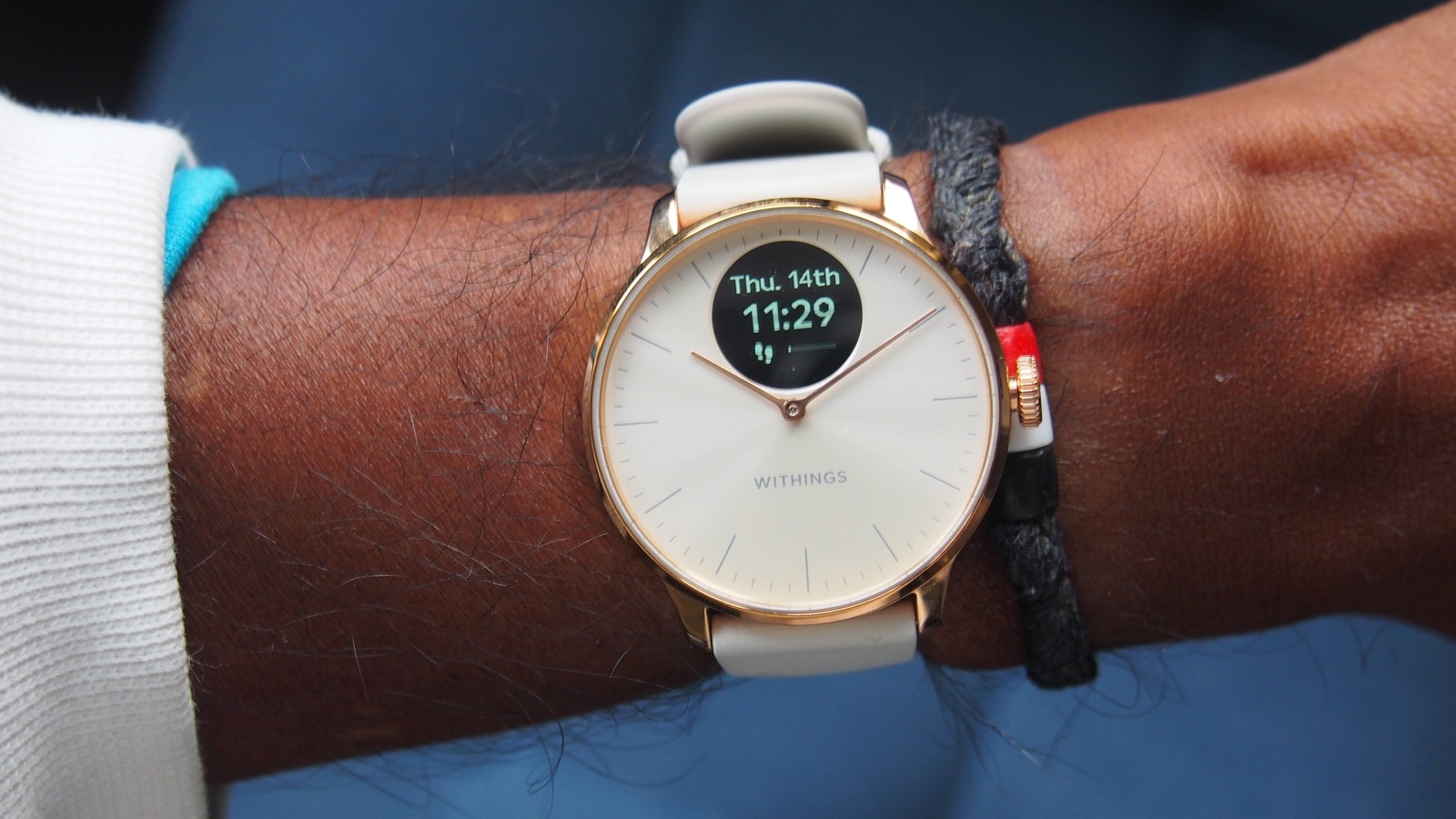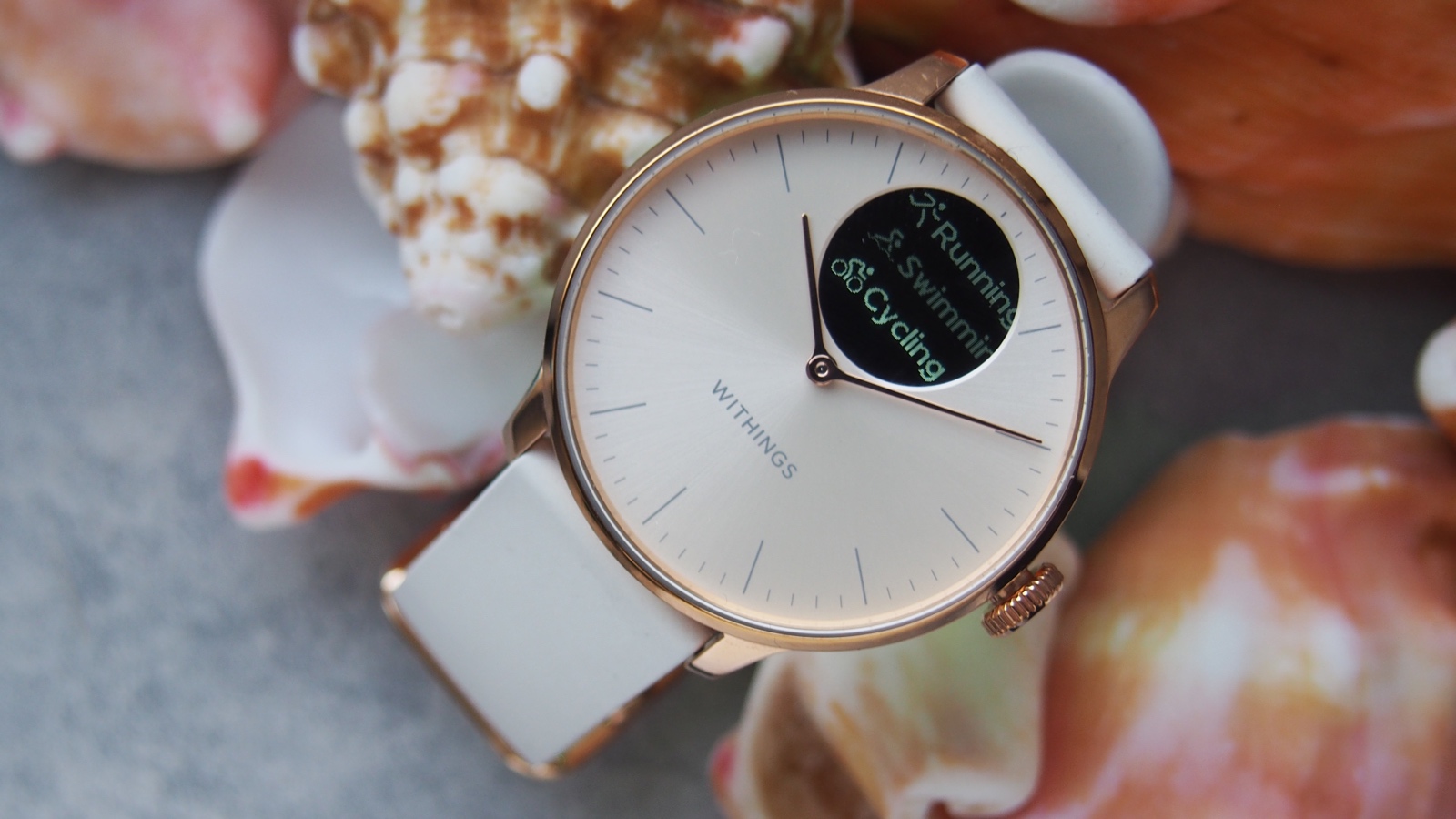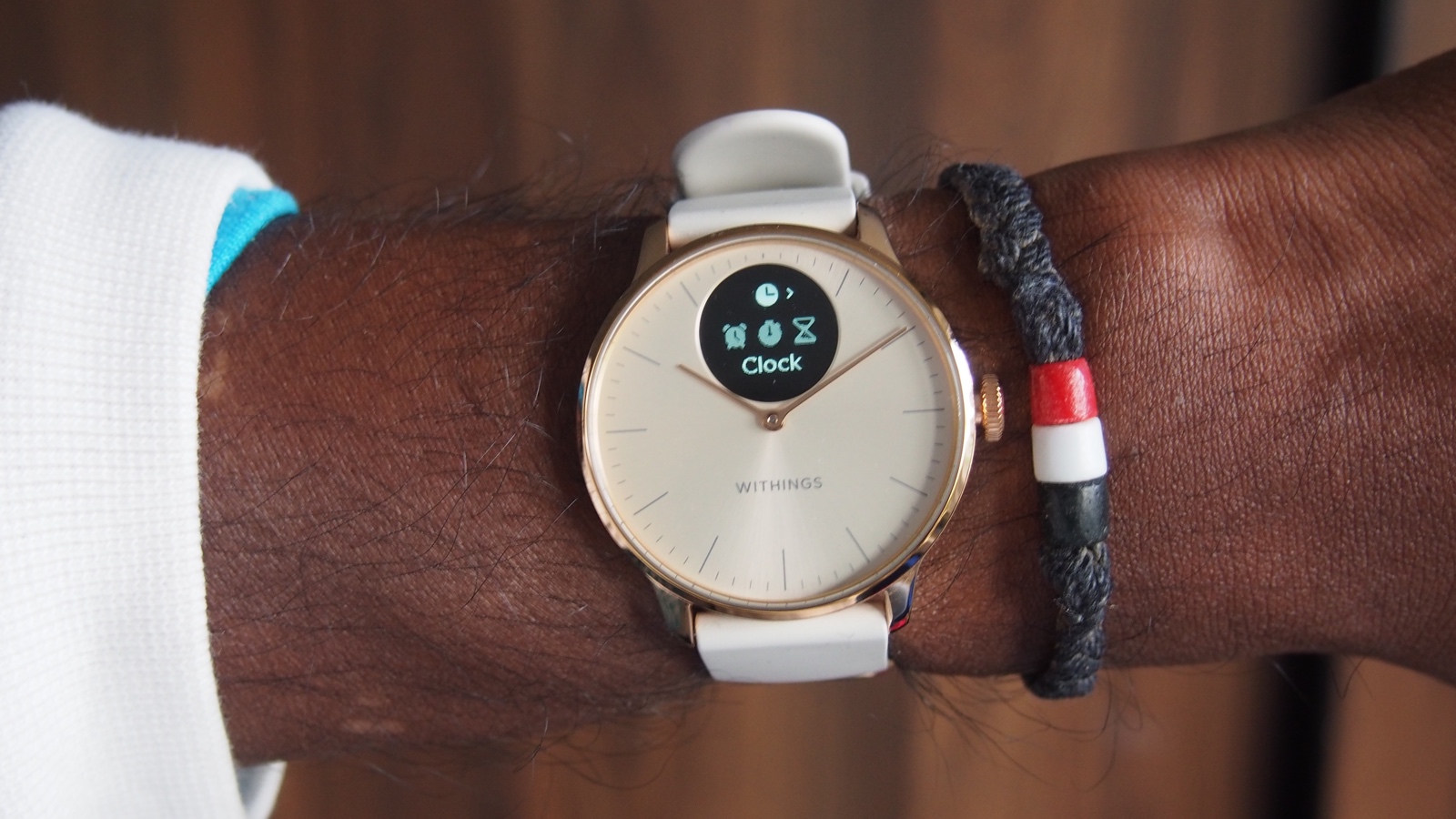
- Elegant design and high quality materials
- Solid sleep tracking support
- Good battery life
- Fitness tracking performance is mix bag
- No groundbreaking features
- Screen isn’t ideal for all smartwatch features
squirrel_12997824
In the world of hybrid smartwatches, Withings has led the way. The ScanWatch Light aims to continue that trend of marrying analog watch design with smarts that are discreetly hidden away.
The more affordable alternative to the ScanWatch 2 may lack features like an altimeter Withings' new temperature tracking, but this is still a fitness, sleep, and health tracker wrapped up in high-grade watch materials.
So, could you grab the cheaper ScanWatch Light instead and still get a great hybrid experience? Here’s our take.
Price and competition
The Withings ScanWatch Light costs $249.95/£229.95, so that’s a fair drop down in price from the ScanWatch 2, which sits at $349/£319. It’s cheaper, but it's far from a budget pick.
That price also puts it up against other standout hybrids like the Garmin Vivomove Style $299/£299, which offers a richer set of smartwatch and fitness features, including payments, stress tracking along with larger touchscreen estate.
You also can't ignore the Fitbit Charge 6 at $159/£139. While it's a departure in terms of a less discreet design, it's packed with sensors and health smarts and benefits from the rich Fitbit platform.
Design
Wareable
What the ScanWatch Light gets right is understanding the assignment that a hybrid watch needs to make you feel like you're wearing a traditional watch.
It comes in a 37mm case size only, so that’s smaller than ScanWatch 2 (38/42mm) and is dinkier than the smallest version of the Apple Watch Series 9 (41mm).
There are two stainless steel color options (rose gold and silver), and five different color watch dials that make it a watch with unisex appeal. It's predominately aimed at women – but not exclusively.
The sand and gold combination we tested showcases Withings’ ability to bring together on-trend watch looks and you always feel like you’re wearing a well-crafted timepiece.
A removable fluoroelastomer strap completes the look with a traditional watch buckle, ensuring it won’t budge from your wrist. There are band colors aplenty available too, including dressier leather ones that will elevate that look over the simpler sports band shown here.
Wareable
The ScanWatch Light’s connected skills are represented by the circular, monochrome OLED display that sits at the top half of the analog.
That’s woken up and controlled by the watch crown that lets you scroll through menu screens or via the supported raise to wake.
It's a very basic digital display, used for simple stats and menu navigation.
The ScanWatch Light is 5ATM rated design so you can go swimming with it or take it in the shower.
When it comes to charging there’s a not-so-sleek proprietary charging cradle that’s all plastic but does at least make sure the watch is securely held when it needs powering up again.
Health and fitness tracking
Wareable
The ScanWatch Light tracks heart rate, step counts, sleep time, and exercise – and offers a raft of women's health features too.
The onboard accelerometer takes care of step and sleep tracking and delivers some of the exercise tracking like treadmill runs.
There's also a PPG optical sensor, which delivers daily heart rate, high/low heart rate notifications, and will track heart rate during exercise.
There's no built-in GPS, but you can use your phone's GPS to track outdoor exercise like cycling and running.
Wareable
I found daily step totals were typically 1,000 steps out from the Fitbit Charge 6. While two trackers will never offer the same step totals as they function using different algorithms to calculate them, that's quite a sizeable difference. It was a similar story for calculated calorie burn, though the difference in the burn numbers wasn't as big.
Wareable
The lack of an altimeter means you don't get floors climbed as a metric. The Withings app will factor in average, maximum, and resting heart rate stats as part of your daily activity data. Both resting and maximum heart rate data matched Garmin's latest optical heart rate sensor technology, which we do find reliable for continuous heart rate monitor data.
When it's time to take it to bed, the Light will capture sleep stages including REM sleep, score you out of 100 for your sleep quality, and track heart rate during sleep.
Withings has recently introduced the ability to track heart rate variability and respiratory rate to boost its wellness tracking credentials.
Wareable
We've been using it alongside Garmin's improving sleep-tracking support – and the Oura Ring Gen 3, one of the best sleep trackers we've tested.
Core sleep data and sleep scores were largely similar to what Garmin produced.
Against the Oura Gen 3 it did seem to capture an hour longer of sleep time on occasions, but most of the core data seemed largely in line on most nights. The Oura is much more sensitive in terms of wake times, and the Withings wasn't quite on par with that best-in-class standard.
That data is free to view in the Withings app where Withings has also recently introduced its Withings+ subscription ($9.95 a month) service to offer access to features like additional workout programs and recipes.
There's also a new Health Improvement Score that aims to give you a simplified assessment of your health once Withings has a few months of data to calculate it.
We're not sure there's anything in our trial of the service to suggest it's integral to the ScanWatch Light experience.
Sports tracking
Wareable
When you're turning to it to the Light to track your exercise time we'd say we were surprised by the performance.
You've got a handful of activities here, so the likes of cycling, pool swimming and indoor and outdoor running are covered with more general modes covering other sports. You'll just get basic workout duration and heart rate data when using those modes.
Wareable
For activities like rowing workouts, you're getting basic metrics only, but the total calories burned weren't far off Garmin's row and exercise heart rate tracking.
Wareable
When putting the connected GPS support to use, it worked pretty effortlessly.
We used it against a Garmin running watch and found distance tracking accuracy good on the whole, while metrics like average pace were similar while there was generally a 5bpm difference in average heart rate.
The connected GPS feels useful and good enough to make it worth having here – and the heart rate doesn't seem to hugely falter either. It's not one for those focused on their real-time bpm for training, but more than good enough for ensuring your effort in the gym is logged properly.
Wareable
In the Withing companion app, you'll find added fitness insights like a Fitness Level measurement, which is based on VO2 max readings.
It didn't match the VO2 max readings we collated from Garmin, but it also didn't feel like it was telling us a different story about our current state of fitness.
Smartwatch features
Wareable
With a tiny display and no touchscreen compromises about smartwatch support are inevitable. And some features do struggle to be meaningful.
ScanWatch Light works with both Android phones and iPhones, which is always good to see. My time predominantly spent pairing it up with an iPhone 14 was stress-free as far as syncing and getting the two connected.
Displaying phone notifications is the main connected feature here, and epitomizes the shortcomings of the tiny display. You need to wait patiently to read through entire messages. If you want to set an alarm you can do that here as well. It’s the same story with timers. That’s your lot.
Some might prefer the more simplistic approach – at the end of the day this is supposed to be an analog watch. But we think other hybrids, most notably Garmin’s Vivomove, handle smartwatch features a little better.
Battery life
With no big screen to power and not a huge collection of smarts to power, you can expect good battery life from the ScanWatch Light.
Withings says it can deliver 30 days of use with typical daily use, so that’s a month before you need to grab that proprietary charging cradle. In reality, it will be less.
If you’re using all of the wellness monitoring features and using the connected GPS regularly, then it’s more likely going to hold up for a week.
Day-to-day, we found the battery on the ScanWatch Light dropped less than 5%. It’s a not too-worrying drop using the connected GPS either, but we did find overnight, with the extra oxygen monitoring in play, that the battery drop was larger and could be as much as 15%.
When it does hit 0% then you can expect it to take up to 2 hours to get back up to 100%. While it doesn’t have the battery stamina as early generation Withings hybrids, we never felt short-changed.
Withings ScanWatch Light specs
| Withings ScanWatch Light | |
|---|---|
| Case Material | Stainless steel |
| Case Dimensions | 36.8 mm diameter (1.6") and 9.85 mm (0.4") |
| Case Thickness | 10.95 mm (0.4") |
| Weight | 27.1g |
| Display | 0.6 inch mocochrome OLED |
| Strap Width | 18mm |
| Battery Life | Up to 30 days |
| Sensors | Accelerometer, Multi-wavelength PPG |
| Compatibility | iOS, Android |
| Price | $249 |
How we test
